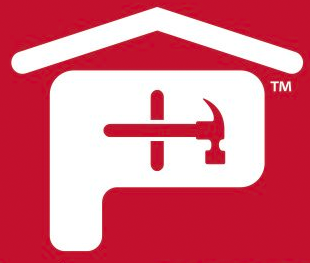Roof underlayment has evolved with synthetic versions, but do you need to make the switch?
In terms of practical longevity and usefulness, maybe only the paperclip has a track record close to that of traditional roof underlayment.
Roof underlayment got its start in the early 1800s during the California Gold Rush. During that early era, paper was laid and then tar placed on top. It provided a quick and easy way to put up a roof.
With advances in material sciences, and the popularity of composite materials, underlayment has evolved. Many shortcomings of the old reliable standard felt have been improved with new synthetic roof underlayment products.
Synthetic roof underlayment consists of artificially manufactured materials from polypropylene, fiberglass, polyethylene and polyester. They're also much more durable, stronger and lighter than traditional underlayment.
So why aren't builders jumping all over these great new products?
The building and construction industry rarely adopts technology quickly, and synthetic underlayment is no exception. Many roofing contractors still have questions.
Expect synthetic underlayment to cost more per roll, but also expect to use fewer rolls
As with most technology advancements in any industry, synthetic underlayment comes with a higher cost. Though synthetic underlayment will cost you about 30% more per roll, there's value in the upgraded cost.
A roll of synthetic roof underlayment weighs much less than its traditional counterpart. That same roll of synthetic will also give the installer 10 squares per roll—five times the two squares per roll for traditional underlayment.
Using synthetic underlayment means fewer trips up and down the ladder for your workers.
Synthetic underlayment provides durability for easier installation and long dry-in periods
Any roofer with a day’s worth of experience on the job, has dealt with reinstallation of traditional underlayment due to tearing and wrinkling. Synthetic underlayment resists these types of incidences due to their inherent strength and material properties.
It also tends to be have better walkability, as many synthetic underlayment comes with high-traction surfaces. This can become really important if the work crew has to scramble to get the underlayment on as an unexpected storm front rolls over the job site.
The other big key, some synthetic underlayment can be set in place uncovered for up to six months. For large commercial jobs, this means less worry about underlayment being ruined by exposure to inclement weather and harsh ultraviolet rays while awaiting shingle installation.
Synthetic versus traditional roof underlayment, what's the final answer?
So the discussion has come full circle. What would be the better choice, traditional felt or synthetic roof underlayment? The answer depends on your need.
If budget does not present a challenge, synthetic could be a good choice. Many contractors in the field believe it's easier to work with and install. Of course, those of the opposite opinion can be found.
For commercial projects, where the underlayment may dry-in for weeks, synthetic would definitely be the better choice. Synthetic roof underlayment can lay exposed to the sun and elements for months without affecting the outcome of the job.
Atlas Roofing offers a wide selection of traditional, engineered and synthetic roof underlayment. Contact an Atlas Roofing Representative with questions about underlayment or the complete range of professional roofing products.




 Gear!
Gear! PRO LOGIN
PRO LOGIN